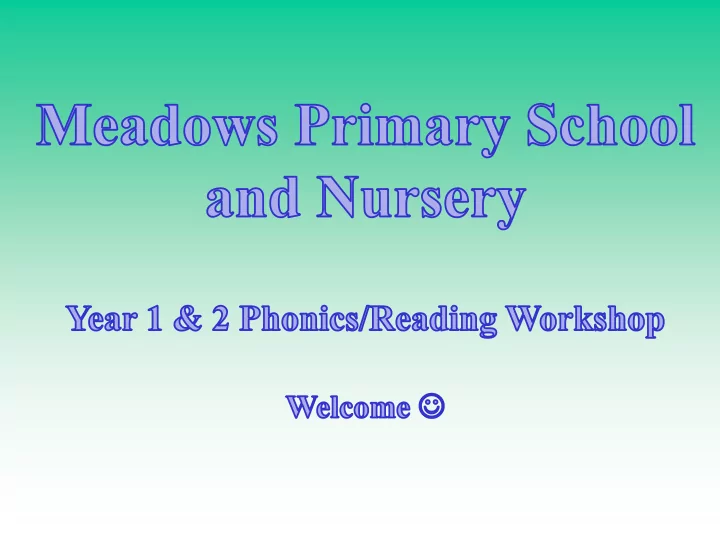

• Children are taught to read by breaking down words into separate sounds or ‘phonemes’. They are then taught how to blend these sounds together to read the whole word. • Children have a 20mins phonics lesson each day and they are encouraged to use these strategies to read and write in other lessons. • There are 44 different sounds.
• Every Year 1 child in the country will be taking the phonics screening check in the same week in June. • The aim of the check is to ensure that all children are able to read by the end of year two. •This ‘midpoint check’ will ensure that we have a clear understanding of what the children need to learn in year 2.
• The check is very similar to tasks the children already complete during phonics lessons. •Children will be asked to ‘sound out’ a word and blend the sounds together.eg d-o-g - dog • The focus of the check is to see which sounds the children know and therefore the children will be asked to read made up ‘nonsense’ words. THIS IS NOT A READING TEST
• The screening will take place throughout the a given week in June. The children cannot retake the test at any other time so it is very important your child is in school during this week. • You will be informed if your child has reached the threshold in a letter with your child’s report. • The check has been designed so that children of all abilities will be able to take part.
• The children will complete the check one at a time in a quiet area of the school. • Their teacher will conduct all of the screening checks with the children. • The screening will only take 5-10mins with each child.
• In year 2 it is assumed that all children will have passed the phonics check and will then move onto developing comprehension skills. • This involves reading a text/story and answering questions based on this. • Liter eral l Retriev rieval - taking answers directly from the text e.g. Where did James go? • Dedu ductio ction n and d In Infer erence ence - reading between the lines e.g. why do you think Sam felt sad? This type of questioning encourages a higher level of thinking.
•Encourage your child to ‘sound out’ when reading or writing. Focusing particularly on spotting more unusual sound patterns. Eg Digraph- 2 letters making one sound cow Trigraphs- 3 letters making one sound night Split digraphs- 2 vowels with a consonant inbetween. Use to be known as the magic e! spine - i_e
• Encourage your child to use their sound mat when writing and use their actions to find the sound they need. • Children can practise their phonics by playing games online. E.g. Buried treasure • Website lists are available • http://www.phonicspla y.co.uk/BuriedTreasure 2.html
• REMEMBER: Phonics is not the only thing needed to become a fluent reader. • Please continue to read with your child each night and encourage them to: • Sound out • Re-read to check it makes sense. • Use pictures for clues. • Ask questions about the book. • And most importantly ENJOY READING!
Recommend
More recommend